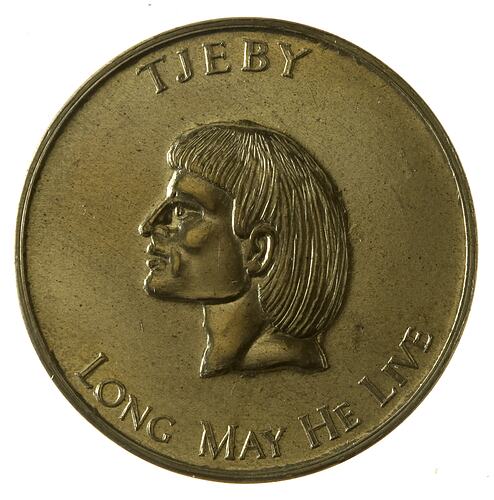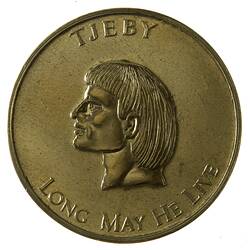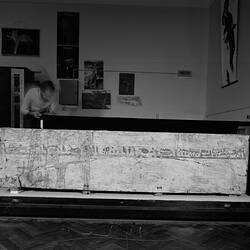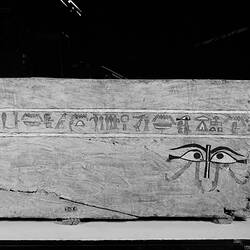Tjeby was an Egyptian who lived on the east bank of the Nile about 4,000 years ago. He worked as an official in the government, and was approximately 5'10" tall, a little above average for the ancient Egyptian male. He suffered from bad teeth, which were severely worn and had signs of abscesses. At the age of 35-40 he died of unknown cause. After death he was placed on his back, his arms outstretched, and his head turned to the east. He was wrapped in bandages, which were then infused with resin. A funeral mask and clay wig were placed on him. Eyes were painted on the outside of his coffin so he could see to the outside world, observe the activities of the living, take part in burial offerings and watch the sun rise each day. The sun represented the god Osiris, and resurrection.
Tjeby was buried at a place called Naga ed-Deir, in a modest tomb with another man named Tjeby, probably his son or brother. This man is now in the collection of the Virginia Museum of Fine Arts in America.
Tjeby's grave was uncovered in 1923. It did not contain elaborate objects - only some pottery, beads, a ring, three walking sticks and what is probably a paint brush. An inscription in hieroglyphs indicated his identity.
Mummification
Knowledge of human anatomy existed as long ago as Ancient Egypt. Ancient Egyptians learned about the inside of the body through the practice of mummification, the preservation of a dead body. They believed that after death, a person's body would be restored in the afterlife, and so it needed to be preserved for burial.
In order to mummify a dead body, priests would make an incision in the left side of the body and remove the internal organs (but leave the heart in place) and store them in Canopic jars. The brain was removed through the nose using a thin, sharp instrument. The body cavity was then packed with dry materials like leaves or sawdust, and the outside of the body was covered in natron, a moisture-absorbing substance. The body was then wrapped in resin-soaked linen bandages. Finally, the mummy's burial in the dry sandy deserts of Egypt ensured that it would not decompose. Through the practice of mummification, Ancient Egyptians were able to learn about the structure and internal organs of the human body.
References
Museum Victoria Information Sheet No. 10389, July 2001.
More Information
-
Keywords
-
Localities
-
Authors
-
Article types



